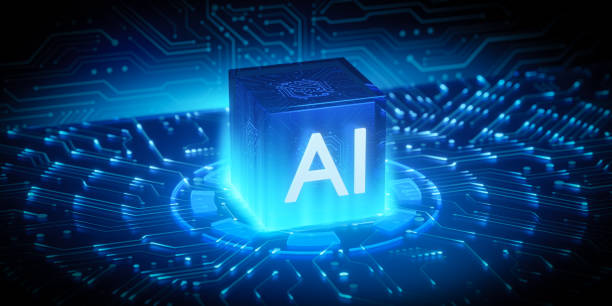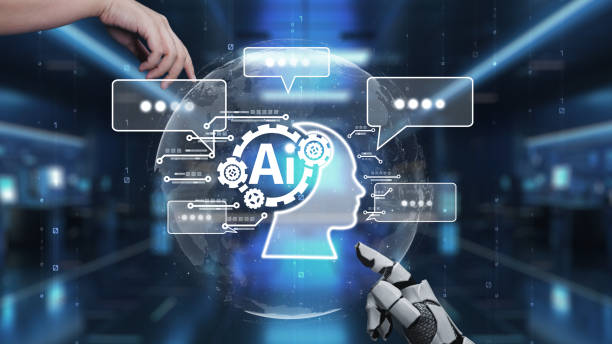What is an AI Robot: Definition and Basic Concepts
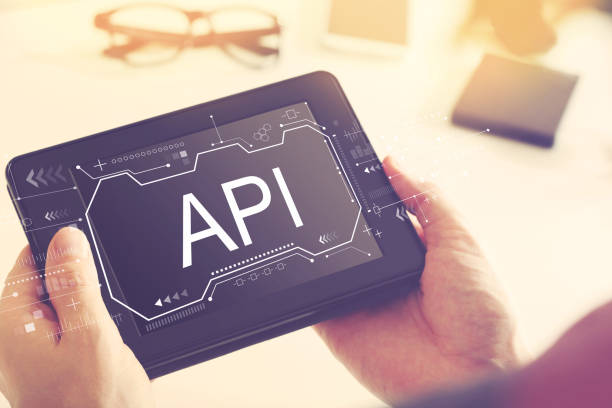
What is an AI Robot: Definition and Basic Concepts
An #AI Robot (Artificial Intelligence Robot) is a combination of two important fields: #Artificial Intelligence and #Robotics.
Simply put, an AI robot is a physical or virtual machine that, using artificial intelligence algorithms, is capable of performing tasks that typically require human intelligence.
These tasks can include learning, reasoning, problem-solving, natural language understanding, pattern recognition, and decision-making.
An AI robot receives environmental information using sensors, processes this information, and uses AI algorithms to perform the appropriate action.
To better understand the concept of an AI robot, it is necessary to become familiar with the basic concepts of artificial intelligence and robotics.
Artificial intelligence is a branch of computer science that deals with the design and construction of systems capable of performing tasks that typically require human intelligence.
Robotics is also a branch of engineering that deals with the design, construction, operation, and application of robots.
The combination of these two fields has led to the emergence of intelligent robots that are capable of performing more complex tasks than traditional robots.
AI robots have widespread applications in various industries, including manufacturing, healthcare, customer services, and education.
AI robots can be used in production lines to perform repetitive and dangerous tasks, act as assistants to doctors and nurses in hospitals, respond to customers in call centers, and be used as educational tools in classrooms.
The future of AI robots looks very bright.
With the rapid advancement of artificial intelligence and robotics technology, these robots are expected to be capable of performing more complex and diverse tasks and play a more significant role in our lives.
Artificial intelligence, as a fundamental transformation, is changing the landscape of various industries.
Are you worried about losing customers because you don’t have a professional e-commerce website?
With e-commerce website design by Rasaweb, forget these worries!
✅ Significant increase in sales and visitor-to-customer conversion rate
✅ Professional and user-friendly design that builds customer trust
⚡ Get free consultation from Rasaweb
Types of AI Robots: Categorization Review
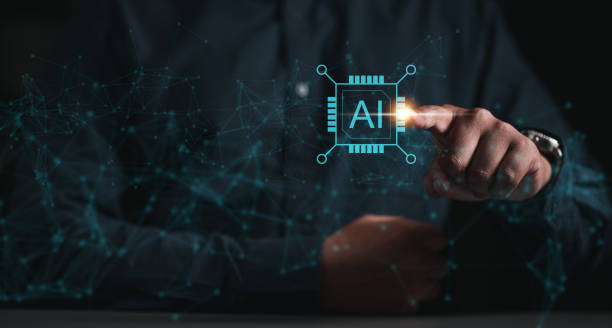
Types of AI Robots: Categorization Review
AI robots can be categorized based on various criteria.
One of the most common methods is classification based on their type of function and application.
Accordingly, AI robots can be divided into the following categories:
Industrial Robots: These robots are used in production lines and factories to perform repetitive, heavy, and dangerous tasks.
Industrial AI robots usually have mechanical arms capable of performing precise and fast movements.
These robots can be used in welding, painting, packaging, and other manufacturing processes.
Service Robots: These robots are designed to provide services to humans.
Service AI robots can be used in hospitals, hotels, restaurants, and other public places.
They can perform tasks such as transporting items, cleaning, providing information, and assisting the elderly and disabled.
Medical Robots: These robots are used in the medical field to assist doctors and nurses.
Medical AI robots can be used in surgery, medical imaging, rehabilitation, and drug delivery.
They can increase the precision and speed of surgeons, analyze medical images with greater accuracy, and assist patients in the rehabilitation process.
Military Robots: These robots are used in the military field to perform dangerous and difficult tasks.
Military AI robots can be used in reconnaissance, bomb disposal, information gathering, and combat.
The use of these robots can reduce the risk to soldiers’ lives.
Educational Robots: These robots are used to assist students in the learning process.
Educational AI robots can act as private tutors, help students with homework, and guide them in learning new concepts.
Domestic Robots: These robots are used to assist people with daily tasks at home.
Domestic AI robots can perform tasks such as vacuuming, lawn mowing, caring for children and the elderly, and providing home security.
An AI robot can be one of the best options for every home.
In addition to classification by function, AI robots can also be categorized by their level of intelligence.
Some robots have limited AI and are only capable of performing pre-programmed tasks.
While others have more advanced AI and are capable of learning, reasoning, and decision-making.
Key Components of an AI Robot: Hardware and Software Review
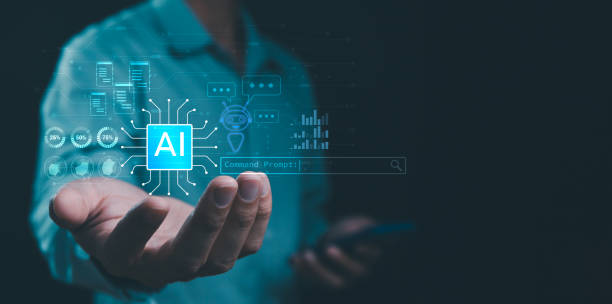
Key Components of an AI Robot: Hardware and Software Review
An AI robot consists of two main parts: hardware and software.
Hardware includes the physical components of the robot such as sensors, actuators, controllers, and power sources.
Software includes AI algorithms, operating systems, and applications that allow the robot to perform its tasks.
Hardware
- Sensors: Sensors are used to collect information from the robot’s surroundings.
There are various types of sensors, including vision sensors, auditory sensors, tactile sensors, temperature sensors, and proximity sensors. - Actuators: Actuators are used to move the robot and perform physical tasks.
There are various types of actuators, including motors, cylinders, and pumps. - Controllers: Controllers are used to control the robot’s movement and operation.
Controllers are typically microprocessor-based and use control algorithms to regulate actuator performance. - Power Source: The power source is used to supply the necessary energy to the robot.
Power sources can include batteries, fuel cells, or external power supplies.
Software
- Artificial Intelligence Algorithms: AI algorithms are used to process information collected by sensors and make decisions about how the robot should operate.
There are various types of AI algorithms, including neural networks, machine learning algorithms, and reasoning algorithms. - Operating System: The operating system is system software that manages the robot’s hardware resources and allows application programs to run on the robot.
- Application Programs: Application programs are software designed to perform specific tasks.
Application programs can include motion control programs, image processing programs, and voice recognition programs.
To better understand the relationship between these components, refer to the table below:
| Component Type | Components | Function |
|---|---|---|
| Hardware | Sensors | Collecting information from the environment |
| Hardware | Actuators | Creating movement |
| Software | Artificial Intelligence Algorithms | Processing information and decision-making |
AI Algorithms Used in Robots: Review and Comparison

AI Algorithms Used in Robots: Review and Comparison
Artificial intelligence algorithms play a vital role in the performance of AI robots.
These algorithms allow robots to process information, recognize patterns, make decisions, and perform their tasks autonomously.
There are various types of AI algorithms, each suitable for specific applications.
Some of the most common AI algorithms used in robots include:
- Neural Networks: Neural networks are computational models inspired by the structure of the human brain.
These networks consist of numerous nodes (neurons) connected in layers.
Neural networks are highly suitable for learning complex patterns and relationships in data.
An AI robot can use these types of networks for recognizing images, sounds, and other sensory patterns. - Machine Learning Algorithms: Machine learning algorithms allow robots to learn from data without explicit programming.
There are various types of machine learning algorithms, including supervised learning, unsupervised learning, and reinforcement learning.
AI robots can use machine learning algorithms to improve their performance over time. - Reasoning Algorithms: Reasoning algorithms enable robots to draw conclusions using knowledge and logical rules.
These algorithms are highly suitable for solving complex problems and making decisions in uncertain conditions.
An AI robot can use reasoning algorithms for path planning, error detection, and answering questions. - Planning Algorithms: Planning algorithms allow robots to determine a sequence of actions to achieve a specific goal.
These algorithms are highly suitable for controlling robot movement, managing resources, and performing complex tasks.
The selection of an appropriate algorithm for a specific AI robot depends on the type of tasks the robot needs to perform and the environmental characteristics in which it operates.
For example, an industrial robot operating in a structured environment might use simple planning algorithms.
Whereas a service robot operating in a dynamic and unpredictable environment might require advanced machine learning and reasoning algorithms.
Artificial intelligence has created many opportunities and challenges for the optimal use of smart robots.
Does your current website build the trust that potential customers should have in your business? If the answer is no, it’s time to have a professional and impactful corporate website with Rasaweb.
✅ Fully customized design tailored to your brand identity
✅ Increased lead generation and business credibility in the eyes of customers⚡ Contact us for a free consultation!
Applications of AI Robots in Various Industries
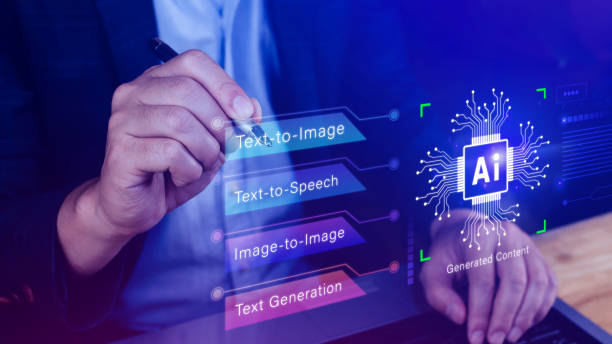
Applications of AI Robots in Various Industries
AI robots are widely used in various industries and play a significant role in increasing productivity, reducing costs, and improving the quality of products and services.
Some of the most important applications of AI robots in various industries include:
- Manufacturing Industry: AI robots are used in production lines to perform repetitive, heavy, and dangerous tasks.
They can be used in welding, painting, packaging, assembly, and other manufacturing processes.
The use of robots in the manufacturing industry can lead to increased production speed, reduced errors, and improved worker safety. - Healthcare Industry: AI robots are used in hospitals and medical centers to assist doctors and nurses.
They can be used in surgery, medical imaging, rehabilitation, and drug delivery.
The use of robots in the healthcare industry can lead to increased precision and speed of doctors, reduced patient pain and discomfort, and improved treatment outcomes. - Customer Service Industry: AI robots are used in call centers and other communication channels to provide customer services.
They can answer customer questions, solve their problems, and register their orders.
The use of robots in the customer service industry can lead to reduced customer waiting times, increased customer satisfaction, and reduced labor costs. - Education Industry: AI robots are used in schools and universities to assist students in the learning process.
They can act as private tutors, help students with homework, and guide them in learning new concepts.
The use of robots in the education industry can lead to increased student motivation, improved academic performance, and easier access to quality education. - Agriculture Industry: AI robots are used in farms and orchards to perform tasks such as planting, tending, and harvesting crops.
They can analyze soil, determine the amount of water and fertilizer required by plants, and harvest crops with greater precision and speed.
The use of robots in the agriculture industry can lead to increased productivity, reduced costs, and reduced water and fertilizer consumption.
AI robot technology is constantly evolving, and new applications for them are emerging in various industries.
It is expected that in the near future, robots will play a more significant role in our lives and help improve the quality of human life.
Advantages and Disadvantages of Using AI Robots

Advantages and Disadvantages of Using AI Robots
The use of AI robots has numerous advantages and disadvantages that must be thoroughly examined before adopting this technology.
Advantages
- Increased Productivity: AI robots can perform tasks with greater speed and accuracy than humans.
This can lead to increased productivity and reduced costs. - Improved Quality: AI robots can perform tasks consistently and with uniform quality.
This can lead to improved quality of products and services. - Cost Reduction: In the long term, AI robots can lead to reduced costs for labor, raw materials, and energy.
- Enhanced Safety: AI robots can perform dangerous and difficult tasks without endangering human lives.
- Easier Access to Information: AI robots can continuously collect, process, and analyze information.
This can lead to better decision-making and easier access to information.
Disadvantages
- High Initial Cost: The purchase and implementation of AI robots can be expensive.
- Need for Expertise: Designing, programming, maintaining, and repairing AI robots requires specialized technical knowledge.
- Job Displacement: The use of AI robots can lead to job losses for some individuals.
- Ethical Issues: The use of AI robots can raise new ethical questions, such as accountability for robot errors and the protection of data privacy.
- Technological Dependence: Excessive reliance on AI robots can lead to disruptions in operations if technical problems arise.
To benefit from the advantages of AI robots and mitigate their disadvantages, it is necessary to thoroughly plan and study before adopting this technology.
Furthermore, attention must be paid to the ethical and social issues arising from the use of robots, and solutions for them must be provided.
The advantages and disadvantages of artificial intelligence require careful and responsible consideration when making decisions.
The Future of AI Robots: Prospects and Possibilities
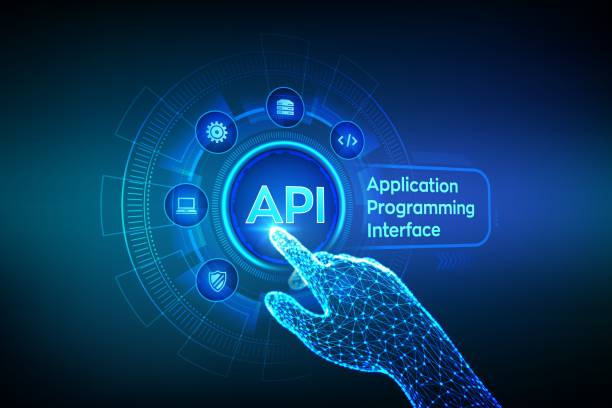
The Future of AI Robots: Prospects and Possibilities
The future of AI robots looks very bright.
With the rapid advancement of artificial intelligence and robotics technology, these robots are expected to be capable of performing more complex and diverse tasks and play a more significant role in our lives.
Some of the prospects and possibilities regarding the future of AI robots include:
- Expansion of Applications: In the future, AI robots will be used in various industries and fields, including transportation, energy, environment, security, and space exploration.
- Increased Intelligence: In the future, AI robots will be capable of better learning, reasoning, and decision-making.
They will be able to adapt to new conditions and solve complex problems. - Improved Human Interaction: In the future, AI robots will be capable of more natural and friendly interaction with humans.
They will be able to understand human language, recognize emotions, and collaborate effectively with humans. - Emergence of Self-Aware Robots: With the advancement of AI technology, the possibility of self-aware robots emerging exists.
These robots will be capable of independent thought, feeling, and decision-making.
The emergence of self-aware robots could raise new ethical and social issues. - Integration with Humans: In the future, we might witness the integration of robots with humans.
This integration could be physical (such as the use of robotic prosthetic limbs) or virtual (such as the use of brain-computer interfaces).
Integration with humans could enhance human capabilities and assist them in performing various tasks.
The future of AI robots is full of opportunities and challenges.
To benefit from the advantages of this technology and mitigate its risks, it is necessary to actively participate in the development and use of robots and pay attention to the ethical and social issues arising from their use.
Next-generation AI robots can significantly change our lives.
| Technology | Outlook |
|---|---|
| Artificial Intelligence | Increased robot intelligence |
| Robotics | Expansion of applications |
| Human-Robot Interaction | Improved communication |
Ethical and Legal Challenges of Using AI Robots

Ethical and Legal Challenges of Using AI Robots
The use of AI robots, in addition to the advantages and opportunities they offer, also raises new ethical and legal challenges that must be addressed.
Some of the most important ethical and legal challenges of using AI robots include:
- Accountability: In the event of an error or harm caused by an AI robot, who will be responsible? Will the robot’s manufacturer, programmer, owner, or the robot itself be held accountable? Determining accountability for robot errors is a complex legal challenge.
- Privacy: AI robots can collect a lot of information about humans.
How can individuals’ privacy be protected from unauthorized collection and use of this information? - Discrimination: AI algorithms may inadvertently be discriminatory.
How can discrimination in the use of AI robots be prevented? - Security: AI robots can be subjected to cyberattacks, and their control can fall into the hands of malicious individuals.
How can the security of robots against cyberattacks be ensured? - Job Displacement: The use of AI robots can lead to job losses for some individuals.
How can this issue be managed, and how can social inequalities be prevented? - Control: How can the misuse of AI robots (such as using them for military or espionage purposes) be prevented?
To address these challenges, new laws and regulations need to be formulated, and specific ethical standards for the use of AI robots must be established.
Furthermore, public education and awareness about AI robots must be considered so that individuals can make informed decisions about the use of this technology.
AI robots should be used in line with human objectives.
Did you know your company’s website is the first point of contact for 75% of potential customers?
Your website is the face of your brand. With **Rasaweb**’s corporate website design services, create an online presence that builds customer trust.
✅ Create a professional and lasting brand image
✅ Attract target customers and boost online credibility
⚡ Get free consultation from **Rasaweb** experts!
Key Considerations in Designing and Developing AI Robots

Key Considerations in Designing and Developing AI Robots
Designing and developing AI robots is a complex and multifaceted process that requires knowledge and expertise in various fields, including artificial intelligence, robotics, software engineering, and industrial design.
To design and develop a successful AI robot, the following points must be considered:
- Define the Goal: Before starting the design process, the purpose of building the robot must be clearly defined.
What tasks is the robot designed to perform? What problems will it solve? Defining the goal helps you correctly identify the robot’s requirements. - Select Appropriate Hardware: The robot’s hardware must be chosen according to the tasks it is intended to perform.
Factors such as processing power, memory capacity, sensor accuracy, actuator speed, and power source must be considered. - Select Appropriate AI Algorithms: AI algorithms must be chosen based on the type of tasks the robot needs to perform.
Factors such as accuracy, speed, learning capability, and generalization capability must be considered. - Design a Suitable User Interface: If the robot needs to interact with humans, an appropriate user interface must be designed for it.
The user interface must be easy, user-friendly, and understandable. - Testing and Evaluation: After designing and developing the robot, it must be thoroughly tested and evaluated.
It must be ensured that the robot works correctly, performs its tasks properly, and is safe. - Continuous Improvement: The robot design and development process must be continuous.
The robot’s performance should be constantly reviewed and improved.
In addition to these points, attention must also be paid to the ethical and social issues arising from the use of robots.
It must be ensured that the robot is designed and developed in a way that does not harm humans, violate their privacy, or lead to social inequalities.
AI robots must be designed in compliance with ethical principles.
Case Studies of Successful AI Robots

Case Studies of Successful AI Robots
Case studies of successful AI robots can help us better understand the applications, advantages, and challenges of this technology.
In this section, we will examine several examples of successful AI robots in various industries:
- Baxter (Manufacturing Industry): Baxter is an industrial robot designed to perform repetitive and simple tasks on production lines.
Baxter has two robotic arms that can perform precise movements.
This robot is equipped with sensors that allow it to perceive its surroundings and collaborate with humans.
Baxter is used in many factories due to its ease of use and reasonable price. - Da Vinci Surgical System (Healthcare Industry): Da Vinci is a robotic surgical system that allows surgeons to perform complex operations with greater precision and delicacy.
Da Vinci has small robotic arms that can enter the patient’s body.
The surgeon controls the robotic arms using a console and performs the surgery.
The Da Vinci Surgical System is used in many hospitals due to reduced patient pain and discomfort and improved treatment outcomes. - Watson (Customer Service Industry): Watson is an artificial intelligence system that can answer customer questions, solve their problems, and register their orders.
Using natural language processing and machine learning, Watson can understand human language and answer complex questions.
Watson is used in many call centers and other communication channels. - AlphaGo (Artificial Intelligence): AlphaGo is a computer program developed by Google that managed to defeat the world champion in the game of Go.
This program uses neural networks and reinforcement learning to learn the game of Go.
AlphaGo’s success demonstrates significant progress in the field of artificial intelligence.
These are just a few examples of successful AI robots.
With the rapid advancement of technology, it is expected that in the near future, we will see the emergence of more successful AI robots in various industries.
AI robots are becoming an integral part of our lives.
Frequently Asked Questions
| Question | Answer |
|---|---|
| What is an AI robot? | It is a robot that uses artificial intelligence capabilities to understand the environment, reason, learn, and make decisions to perform complex tasks independently. |
| What is the main difference between a regular robot and an AI robot? | AI robots can learn and adapt to their environment, while regular robots typically operate based on fixed and predetermined programming. |
| In what fields are AI robots used? | In fields such as industry (production lines), medicine (robotic surgeries), services (customer support, smart vacuum cleaners), exploration (space and underwater), and entertainment. |
| How do AI robots learn? | They acquire new skills by analyzing large data sets and identifying patterns through Machine Learning and Deep Learning algorithms. |
| Can AI robots have emotions? | Currently, no. They can identify or simulate emotions, but they do not experience real emotions like humans. |
| What are the most important advantages of using AI robots? | Increased productivity, reduced human error, performing dangerous or repetitive tasks, and providing innovative and efficient services. |
| What challenges exist in the development of AI robots? | The need for abundant and quality data, algorithmic complexity, ethical issues, cybersecurity, and high research and development costs. |
| Are AI robots dangerous for humans? | With adherence to safe design principles and ethical regulations, no. Concerns are more related to social and economic impacts such as changes in the job market. |
| What is an example of an AI robot in daily life? | Smart vacuum cleaner robots (like Roomba) that automatically map and clean the house, or smart voice assistants (like Siri and Alexa). |
| How is the future of AI robots predicted? | They are expected to become smarter, more autonomous, and capable of more complex interactions with humans, playing a more prominent role in industry, medicine, transportation, and daily life. |
And other advertising agency services by Rasaweb in the field of advertising
- Smart SEO: An effective tool for increasing sales by using real data.
- Smart Reportage: An effective tool for campaign management with a content SEO strategy.
- Smart Link Building: Professional optimization for campaign management using attractive UI design.
- Smart Advertising Campaign: A new service to enhance customer behavior analysis through precise audience targeting.
- Smart Customer Journey Map: An innovative platform to improve customer behavior analysis with an SEO-driven content strategy.
And over hundreds of other services in the field of internet advertising, advertising consulting, and organizational solutions.
Internet Advertising | Advertising Strategy | Advertorial
Sources
AI Opportunities on Digiato
Challenges of AI Robots on Zoomit
The Future of AI from IRNA’s Perspective
Ethics in AI – Tabnak
? To turn your ideas into digital reality and reach more customers, Rasaweb Afarin Digital Marketing Agency, specializing in user-friendly website design and SEO, is by your side.
📍 Tehran, Mirdamad Street, next to Bank Markazi, Kazeroon Jonoubi Alley, Ramin Alley, No. 6


